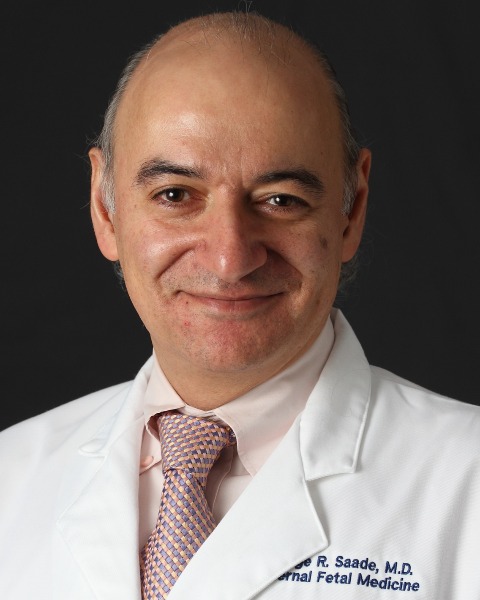Labor
Poster Session 2
(578) Dilapan-S versus Standard Methods for Cervical Ripening in Term Pregnancies: An Individual Patient Data Meta-Analysis

Antonio F. Saad, MD (he/him/his)
Professor in Maternal Fetal Medicine and Critical Care
Inova Health
Fairfax, VA, United States- CP
Claudia Pedroza, PhD
McGovern Medical School at The University of Texas Health Science Center at Houston (UTHealth)
Houston, TX, United States - RG
Rachana Gavara, MD
Columbia University Medical Center
New York, NY, United States - GJ
Gupta Janesh, MD
Birmingham Women's and Children's NHS Foundation Trust, England, United Kingdom

Ronald J. Wapner, MD (he/him/his)
Professor of OBGYN; Director of Reproductive Genetics
Columbia University Irving Medical Center
New York, NY, United States
George R. Saade, MD (he/him/his)
Professor & Chair of Ob-Gyn
Eastern Virginia Medical School
Norfolk, VA, United States
Primary & Presenting Author(s)
Coauthor(s)
Dilapan-S is a cervical ripening agent approved by the FDA that has been found to be just as effective as other agents. It can be utilized for outpatient ripening, but there have not been any large-scale studies conducted to compare its cesarean delivery rate. Our objective was to combine these trials to compare cesarean delivery rates for Dilapan-S compared with other cervical ripening methods, overall and in sub-groups.
Study Design:
This was a systematic review and meta-analysis of individual patient data (IPD) from randomized controlled trials comparing Dilapan-S to mechanical or pharmacologic cervical ripening methods for labor induction in singleton gestations. Ovid MEDLINE, Embase via Ovid, Ovid Emcare, CINAHL Plus, ClinicalTrials.gov, euclinicaltrialsregister.eu, and Scopus were searched. The primary outcome measure was cesarean delivery (CD) rates. Two reviewers independently selected studies, assessed the risk of bias, and extracted the data. Pre-specified subgroup analyses were performed for parity. Pooled odds ratios (ORs) adjusted for maternal age and parity with 95% confidence intervals (CI) were calculated using the frequentist and Bayesian approaches.
Results:
Four randomized controlled trials were identified, with 1731 women included (1036 allocated to Dilapan-S; 695 to alternative cervical ripening methods). CD rates were 28% and 30% with Dilapan-S and other methods, respectively. There was no difference in age and parity-adjusted analyses of CD rates between Dilapan-S and other methods (OR 1.03, 95% CI 0.8-1.3). Bayesian inference indicated a 95% probability of being non-inferior (5% margin) and a 4.5% probability of being inferior to other methods (Figure). Subgroup analysis demonstrated significant interaction with parity with a 99% probability of lowering cesarean rates among multiparous women treated with Dilapan-S (RR 0.63, 95% CI 0.4-0.9; Table).
Conclusion:
Dilapan-S was at least non-inferior and marginally superior in lowering cesarean rates compared to other pre-induction cervical ripening agents. Parity impacted efficacy, with multiparous women benefiting the most.

